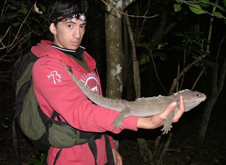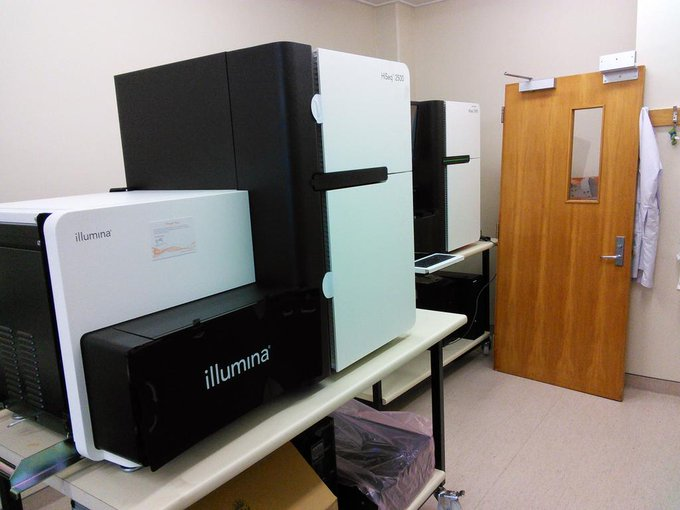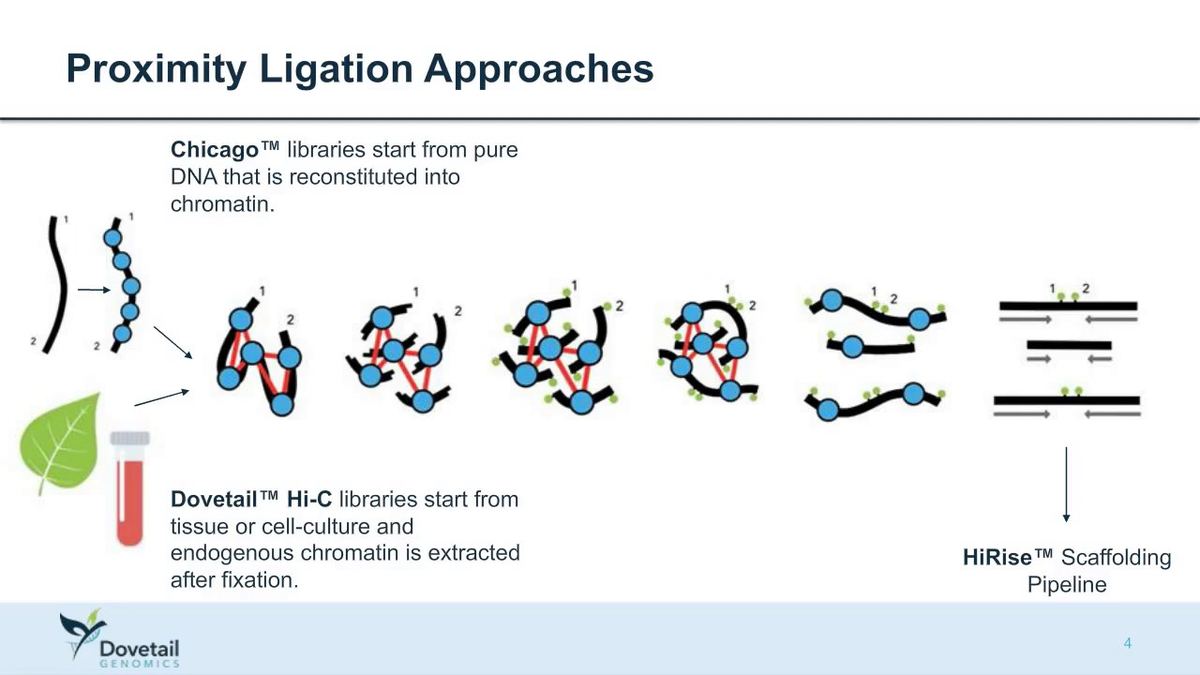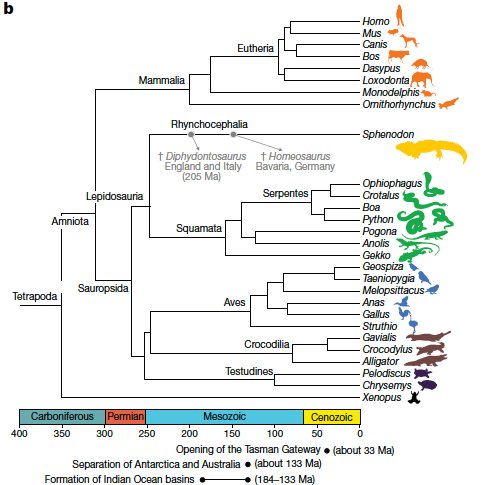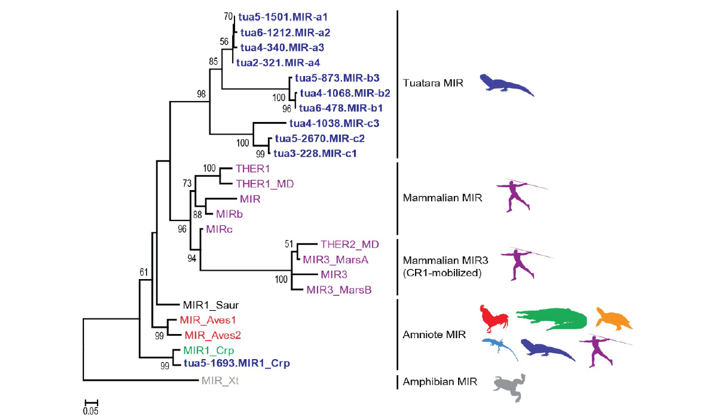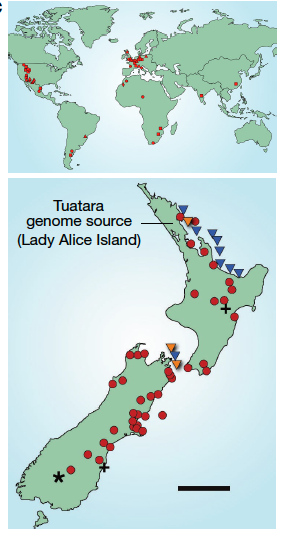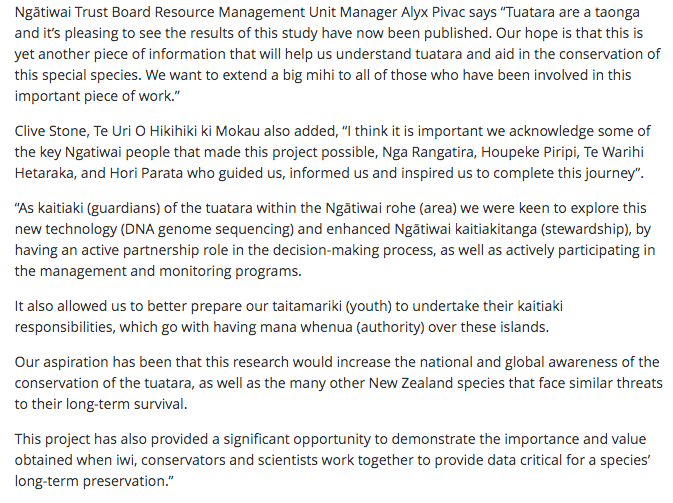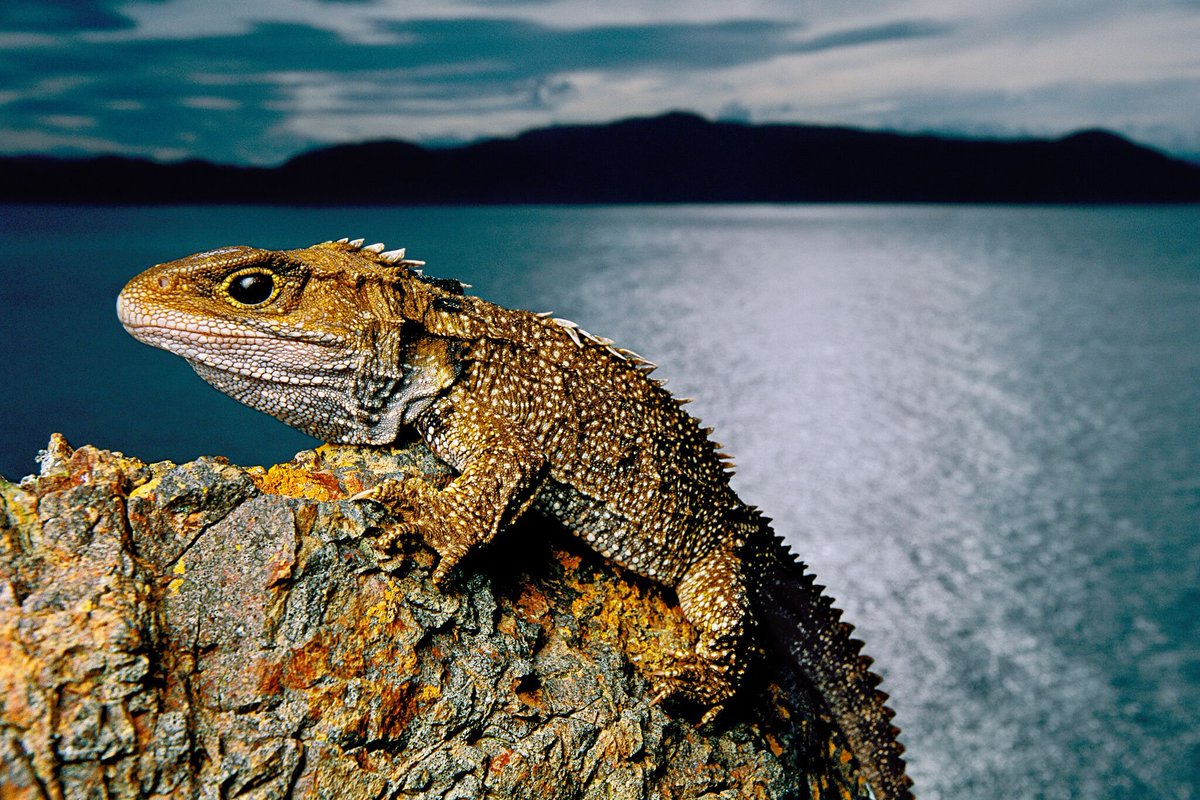Tuatara genome published today. Hitting the keyboard briefly between interviews to update on the key findings of this project. This could end up being a long thread. Lovely summary here by @DrRebeccaJ if you want the key points. https://www.nature.com/articles/d41586-020-02063-4">https://www.nature.com/articles/...
First, some thank yous. This project was made possible by a fantastic group of collaborators locally and internationally. I particularly wish to acknowledge the mahi of my friends at Ngātiwai who partnered with us to produce the genome for this unique taonga.
Let& #39;s start out with why the tuatara is so special? There is just one tuatara, which is the sole survivor of a lineage of reptiles that once spanned the globe. Thus, the tuatara provides unique insights into vertebrate biology and evolution.
Sequencing the genome of tuatara provides a framework to explore what makes the tuatara special. Having last shared a common ancestor with the lizards and snakes 250 mya, there are many features unique to tuatara. You can explore some here: https://www.ebi.ac.uk/ena/browser/view/GCA_003113815.1">https://www.ebi.ac.uk/ena/brows...
Most of the sequencing work on tuatara was conducted in house through @OtagoGenomics and it is a credit to the facilitate how well they applied what was then a variety of new approaches for genome sequencing with support from @illumina
The tuatara genome is pretty big - 5Gbp versus the 3Gbp. This large size and the fact that there is nothing really like tuatara created some problems with assembly – we used lots of approaches. The best assembly came via @DTGenomics. Thks @ed_green_72
And we needed some pretty big computers and CPU time to put this together. All masterfully wrangle by @kim_rutherford with help from @bentpetersen and many others. Shout out to DTU and @NeSI_NZ for more CPU hours than I can count.
So what did we find out? Phylogenetic position and date to most recent common ancestor sorted. Closest relatives lizards and snakes, but they diverged ~250 mya.
It is a big genome, so what makes it so big? Repeats, lots and lots of repeats. Many of these are newly described. Curiously one class of repeats, MIRs, previously known mostly from mammals is abundant in tuatara.
Lots of innovations that may help explain longevity, visual systems, disease resistance, thermoregulation. For a predominantly nocturnal species tuatara have a lot of visual genes...
The tuatara& #39;s ancestors once spanned the globe, but that lineage of reptiles seems to have disappeared from everywhere except NZ ~30 mya. Tuatara once common across NZ are now restricted to 32 offshore Islands and a few sanctuaries. IUCN lists them as Vulnerable
One tuatara species or two? This has been debated over the years. It seems there is probably one tuatara species, but there are big genetic differences among tuatara populations and management likely needs to be island by island.
A further key message in our paper was about undertaking work on genomes in a manner consistent with the CBD and the Nagoya protocol. We have laid a foundation for a partnership approach – Ngātiwai is the senior author of our work. This is an approach we hope to build upon.
The full paper, in glorious colour, is available here, fully open access - thanks @nature. For the die-hard enthusiast, there is also a 179 supp doc that goes through the extended analyses. Thanks to @KnitMeAThneed who wrangled that beast into shape. https://www.nature.com/articles/s41586-020-2561-9.epdf?sharing_token=Whphk6DGtgpfmI9UsV9cidRgN0jAjWel9jnR3ZoTv0NlWetRmEneiiHwIqVMLUlnZ0dkZ5N1FMzWxH337NIkeqgXTf55IpLEWRl87m8w_Y9pHUzOy2f2PLZ6XbbTIby-9PkgxpVIz-3lysjhBLiqXO27bXfTY_jh0wRDL4zIa38%3D">https://www.nature.com/articles/...
I may well write a blog, but today @TheAtavism, who blogged on tuatara back in 2013 has had the first say. You can read it here:
https://david-winter.info/tuatara-genome/
And">https://david-winter.info/tuatara-g... for a wander down memory lane there is this: https://sciblogs.co.nz/sequencing-the-tuatuara-genome/2013/06/17/why-sequence-the-tuatara-genome/">https://sciblogs.co.nz/sequencin...
https://david-winter.info/tuatara-genome/
And">https://david-winter.info/tuatara-g... for a wander down memory lane there is this: https://sciblogs.co.nz/sequencing-the-tuatuara-genome/2013/06/17/why-sequence-the-tuatara-genome/">https://sciblogs.co.nz/sequencin...
Finally, want to learn more about tuatara? Then I highly recommend this wonderful volume by Prof Alison Cree from @Zoology_Otago. I have used this frequently throughout our work. P.S. It& #39;s on sale... https://www.canterbury.ac.nz/engage/cup/catalogue/books/tuatara-biology-and-conservation-of-a-venerable-survivor.html">https://www.canterbury.ac.nz/engage/cu...
8 years or so in the making I am glad this is paper is now out. I have made many friends through this collaboration. New projects have emerged among the team, many careers have evolved and prospered, which is a wonderful thing to see unfold. I hope many find this genome useful.
And yes, for those that asked, I am also the Loch Ness guy. Now I have this project finished I can return to finishing up that work... https://www.lochnesshunters.com/ ">https://www.lochnesshunters.com/">...

 Read on Twitter
Read on Twitter